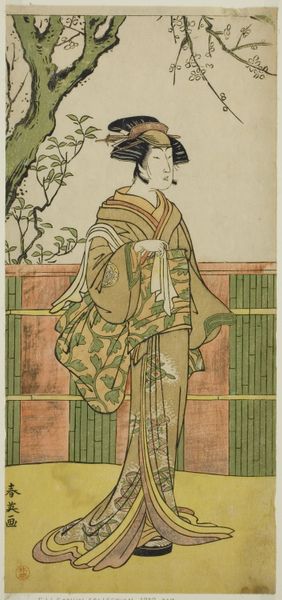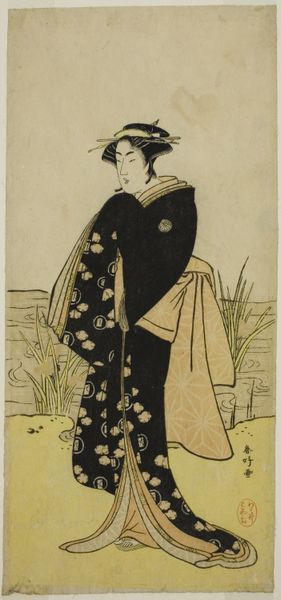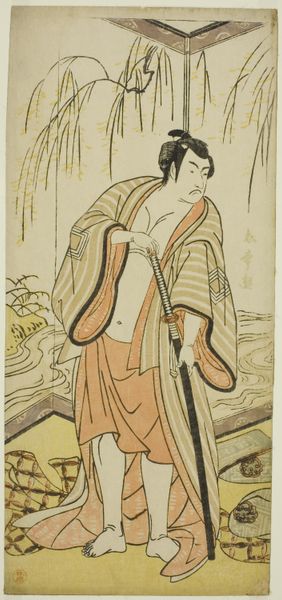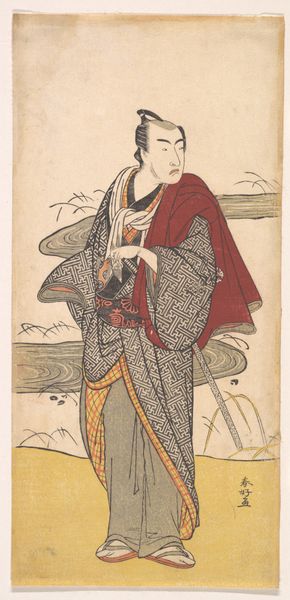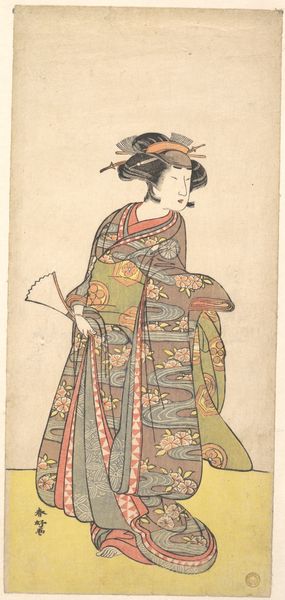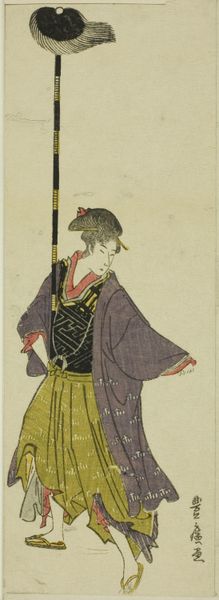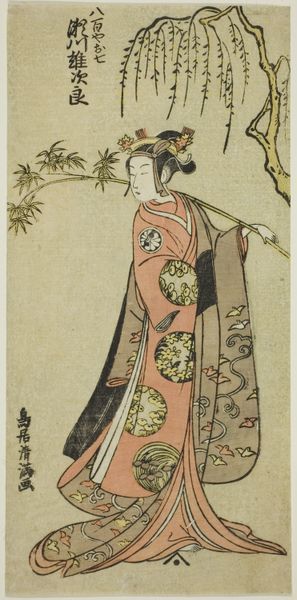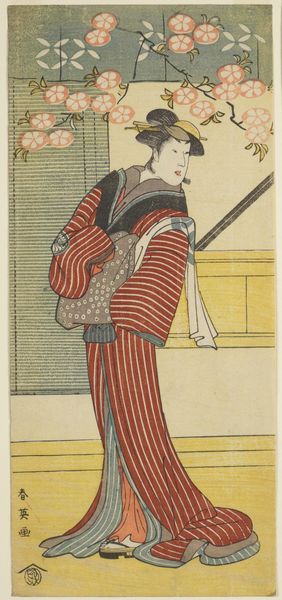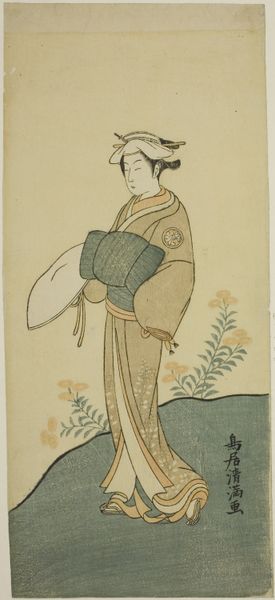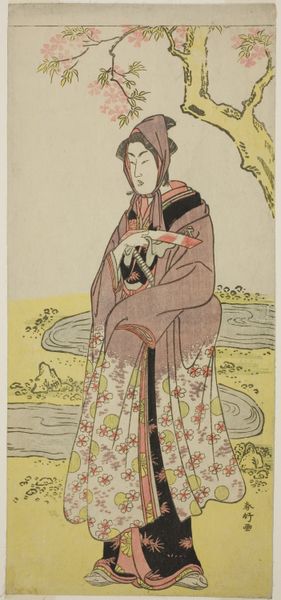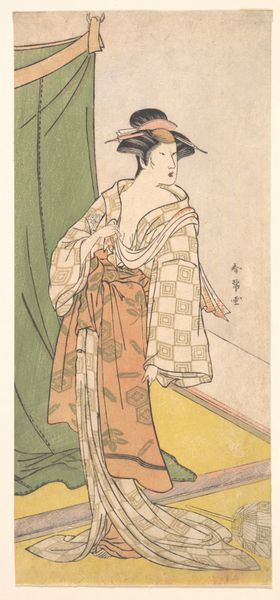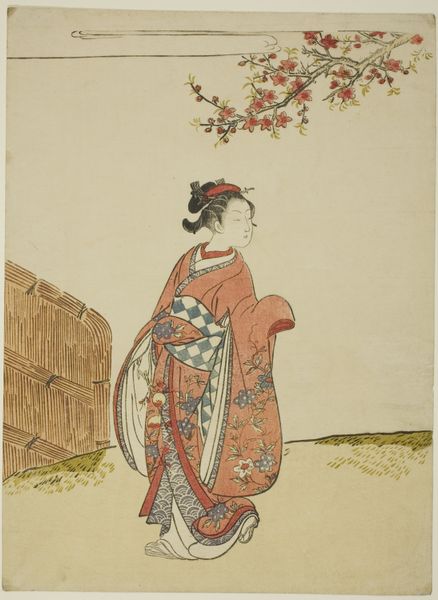
The Actor Segawa Kikunojo III in an Unidentified Role c. 1786 - 1787
0:00
0:00
#
portrait
# print
#
asian-art
#
ukiyo-e
#
figuration
Dimensions: 31.7 × 14.8 cm (12 1/2 × 5 13/16 in.)
Copyright: Public Domain
Curator: Let’s turn our attention to Katsukawa Shunko's woodblock print from around 1786-1787, entitled "The Actor Segawa Kikunojo III in an Unidentified Role," now residing here at the Art Institute of Chicago. The prints in the Ukiyo-e style captivate immediately, don’t they? Editor: It has a wonderful sense of understated grace, particularly in the soft coloring and the subtle textures created through the woodblock printing. You almost get a sense of quiet introspection emanating from the figure. Curator: Absolutely. Focusing on the print's construction, the key block determined the outlines, with subsequent blocks carefully carved for each color. Shunko utilized several blocks here—notice the way the green of the robe interplays with the darker, swirling pattern of the outer garment, creating a sumptuous interplay of material representation. Each application required meticulous labor, a collective endeavor by artisans dedicated to reproducing the master’s vision, reflecting the collaborative, yet stratified, nature of production in Edo period Japan. Editor: It speaks volumes about identity formation within the context of theater, doesn't it? We're looking at an actor, portraying an unknown female character—himself a gendered and raced performance. This Ukiyo-e print places that fluid performance in a space accessible for viewing and consuming by a broad audience. It invites us to contemplate the construction of gender, class, and celebrity in the 18th century through art, while also allowing a space for reflecting on how we perceive the identity of theatrical workers and what social expectations are for people within that creative, artistic space even today. Curator: Yes, consider the implications for consumption as well. The widespread production of these prints made theatrical figures more accessible than ever, essentially turning actors like Segawa Kikunojo III into commodities. They blurred the boundaries between art and popular culture. The materiality of the print – the paper, ink, and wood – facilitated this process of commodification, democratizing access while embedding it within circuits of trade and exchange. Editor: Indeed, and this consumption creates a dynamic. I think this piece creates room to interrogate historical narratives through a contemporary lens and discuss issues pertinent in theater, social justice, artistic consumption and performance in art. Curator: Very well said. What resonates most for me is Shunko’s exceptional rendering of fabric. One can almost feel the texture and weight, which is testament to his mastery of technique and the collaborative labor that underpinned it. Editor: Ultimately, what remains powerful about this print is how it transcends a simple record and invites conversation about gender and labour in the world of Japanese Theater.
Comments
No comments
Be the first to comment and join the conversation on the ultimate creative platform.

